The Children’s Book Review | October 2, 2019
Xindi Yan grew up in a small city called Wuhu in China, and like Betty, she was always the smallest in her class. Standing a little shy of five feet, she still can’t reach the high shelves in grocery stores and sometimes finds that shoes made for kids fit her best. But her size didn’t stop her from chasing her big dreams of being a published artist in New York City. Xindi is the illustrator of Sylvia Rose and the Cherry Tree by Sandy Shapiro Hurt and the Craftily Ever After series by Martha Maker. She lives in Brooklyn with her husband and hopes to have a puppy one day.
Inside Xindi Yan’s Studio
My husband and I live in a one bedroom apartment in Bushwick Brooklyn. It’s a wonderful hip and diverse community with lots of awesome street art and galleries scattered around. My studio is a true reflection of the real estate market of New York City—a desk between the living room and kitchen. To my left I can see through our balcony doors to the trees outside and hear the rumble of subways. To my right, I have the kitchen island with a microwave and an electric tea kettle. Here I have all I need to be a happy hermit illustrator.
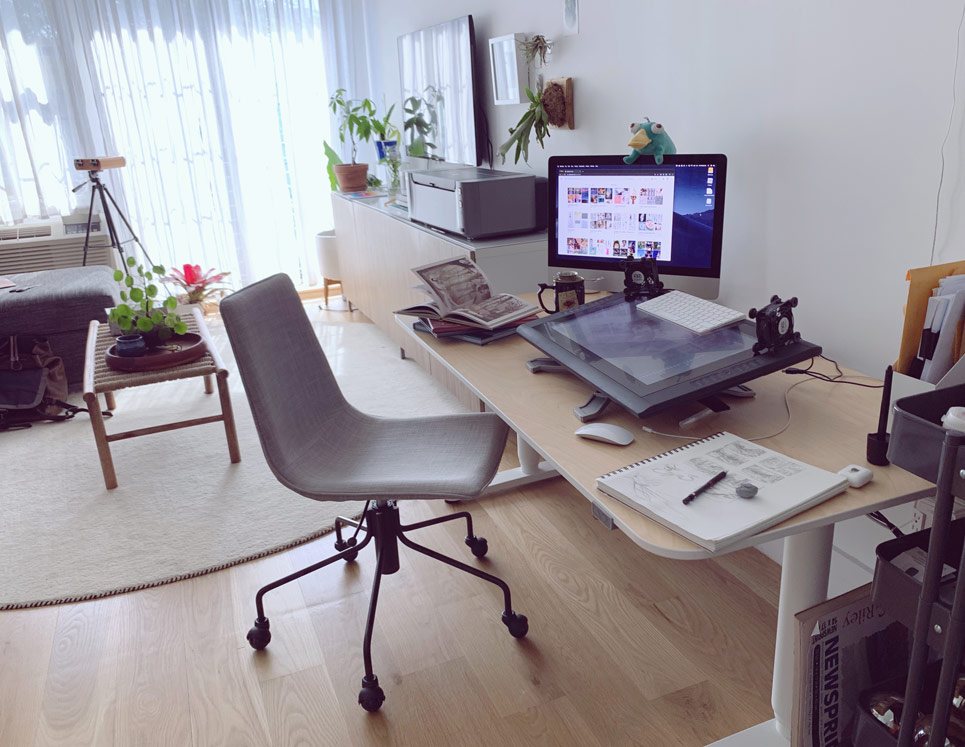
Figuring out the home “studio” was challenging. Since the living room is right next to me, we put up a nice set of shelves behind the sofa for my book collections and show off some of my proud possessions. I also like to keep a lot of plants around. They brighten up the space and always keep me in a good mood.
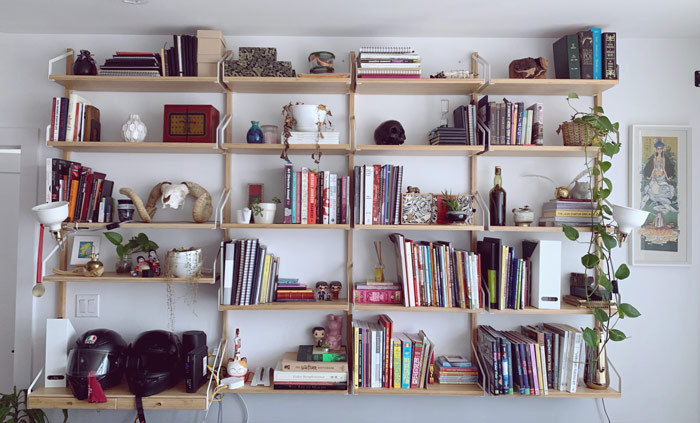
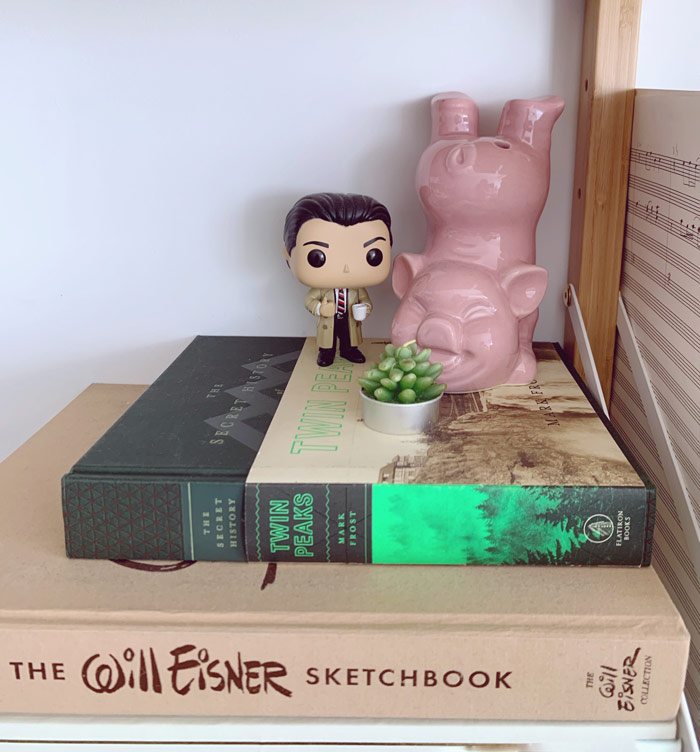
During the beginning of a project, I usually head out to a local cafe to do thumbnails. I find leaving the studio/home space helps me focus at this stage and also provides me with lots of inspiration.
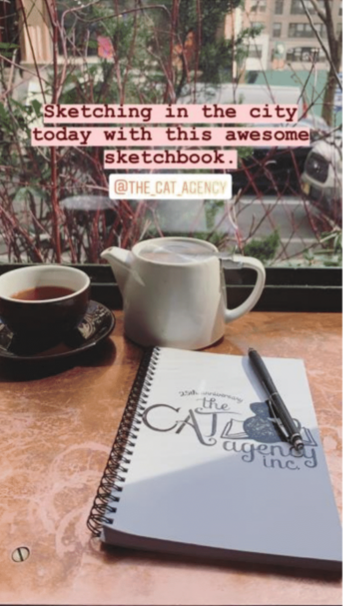
Later when I work at my desk, there are usually sketches and inspirations scattered around the screens, as well as the occasional microwavable lunch. A good cup of green tea in my favorite mug is a must. I work on a dual screen setup with an iMac and a Cintiq. Usually I draw with the Cintiq screen down flat so that it doesn’t strain my wrist. The screen gets a bit hot after a long time of working on it, so I have two little fans sitting on top to help ventilate. My keyboard is also resting on the screen for easy access to Photoshop shortcuts. The long hours of painting when sprinting towards the deadline can create a lot of pain if you are not set up ergonomically. A lot of my artist friends are suffering from back pain and carpal tunnel syndrome, so I try my best to make sure I can work efficiently and pain free.
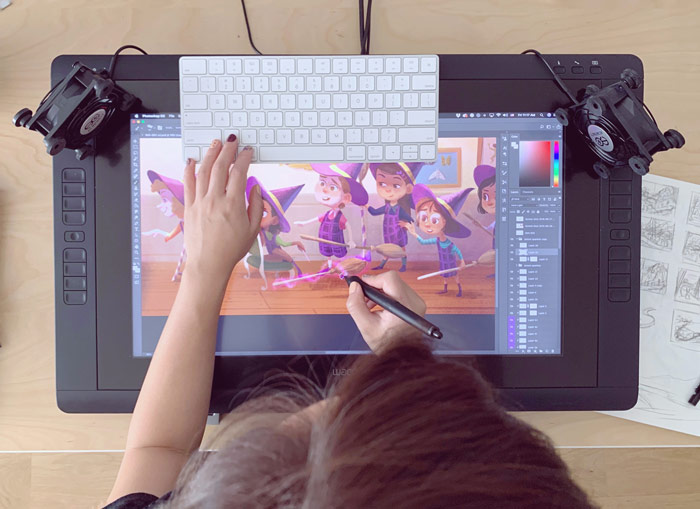
Xindi Yan’s Creative Process
When I first receive a manuscript for a picture book, I like to print it out and read it out loud a couple times without the art notes (if there are any). This helps me feel the rhythm and emotions through the story. When reading, scenes play out like a movie in my head. Sometimes clear visions of a character or a scene will jump right out at me, other times it will be a color palette or a feeling that I’ll try to materialize later on. I also start a list of visual elements to include and notes for each page like camera angles or movie scenes to reference.
I use Pinterest to gather visual references before starting on character sketches and thumbnails. These pages are on my computer screen throughout the whole project, providing a zone to immerse myself in.
I find it extremely important to start by drawing with a pencil on paper. It’s kind of a nostalgic feeling that takes me back to drawing as a child. The kind of pure focus and joy while drawing brings so much energy to the sketches. And I try my best to preserve that as I refine them digitally.
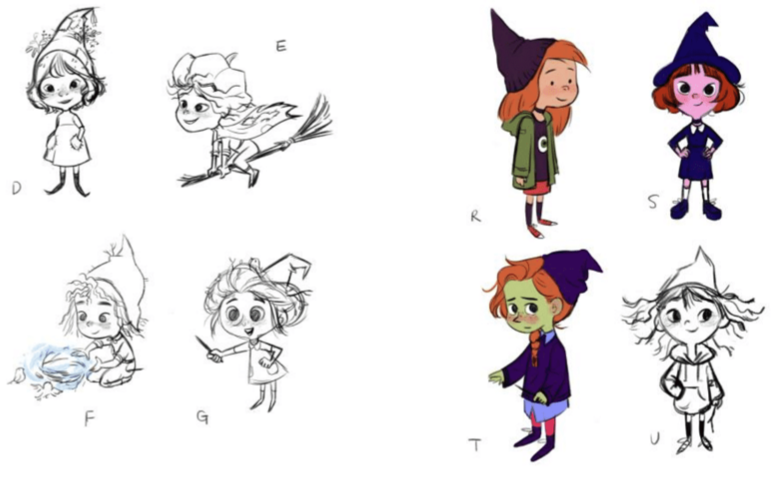
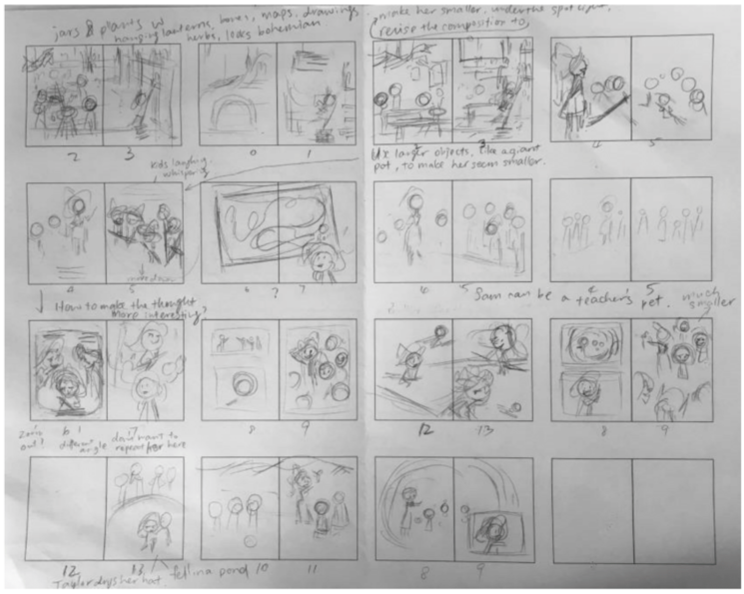
After I have a good idea of the composition with the thumbnails, I take a picture and import them into Photoshop to clean up. I also drop in the texts at this stage to make sure there’s enough space around them. The sketches have to be clear enough for the clients to recognize and for me to know exactly what I’m painting, but personally I don’t like to clean them up too much. Otherwise I find the painting part to be a bit boring, like filling in colors. And I risk losing the fluidity in the rough drawings.
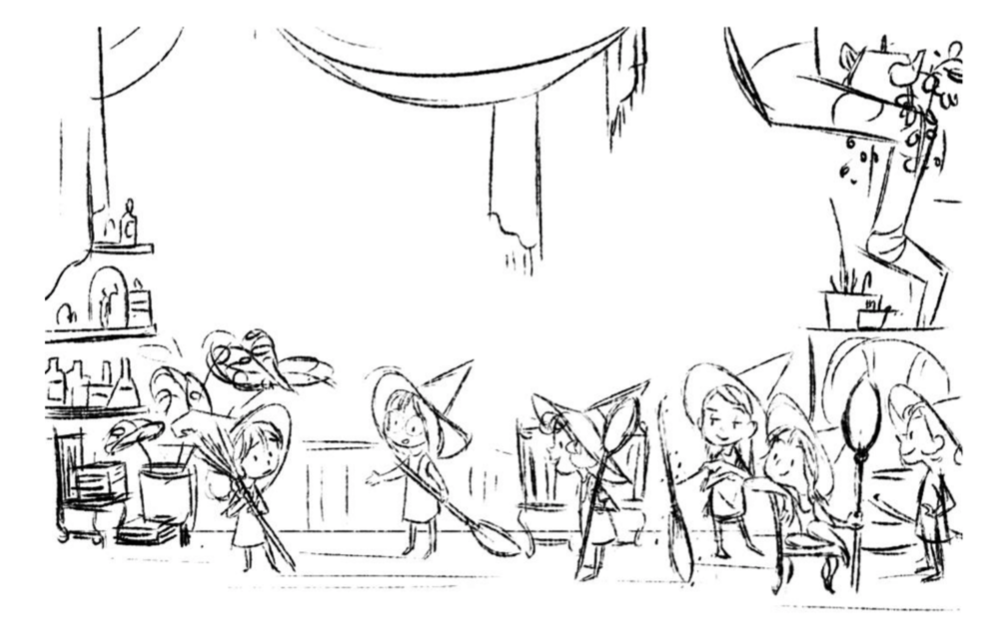
If time allows, I’d do a value and color sketch of a piece before the final painting. It’s been extremely helpful with figuring out lighting and colors for a complicated piece. There were times I didn’t do the prep work and ended up wasting a lot of valuable time making adjustments when painting the final pieces. But the easy editing also allows me to experiment with some elements and colors along the way.
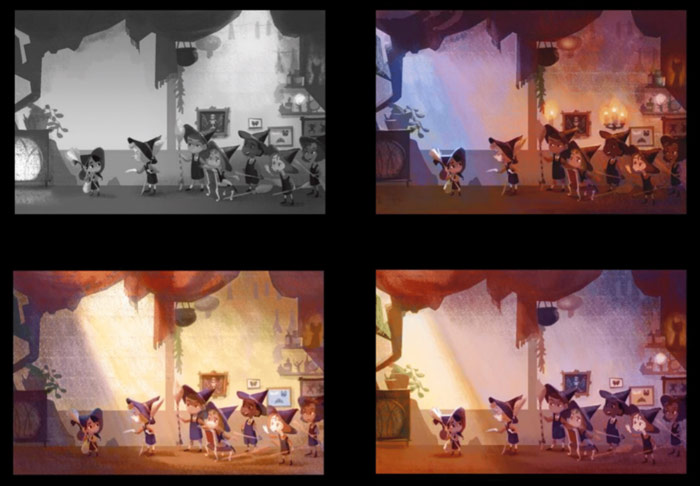
For The Itty-Bitty Witch, all the artwork is done digitally in Photoshop. You can find my painting process videos on my Youtube channel https://www.youtube.com/watch?v=DuRADYKv6Qc&t=395s .
And you can see more sketches and process artwork from The Itty-Bitty Witch on my Behance page.
I feel so lucky every day to be able to wake up, step right into my “studio” and paint away. It’s a dream come true and it wouldn’t have happened without my wonderful agent and all the talented writers, editors, art directors and designers I’ve worked with. I hope our group effort and love for this book can be passed on to the readers!
Learn more at www.xindiyanart.com, Twitter: @xindiyanart, and Instagram: @xindiyanart
—
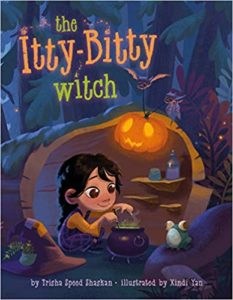 The Itty-Bitty Witch
The Itty-Bitty Witch
Written by Trisha Speed Shaskan
Illustrated by Xindi Yan
Publisher’s Synopsis: Betty can’t wait to be a first-grade witch. But on the first day of school, her classmates start calling her “Itty Bitty” because she’s small and still uses her kinder-broom. Betty doesn’t like the nickname—or how it makes her feel itty-bitty inside. So she comes up with a BIG idea to prove herself: winning the Halloween Dash.
Ages 3-7 | Publisher: Two Lions | July 16, 2019 | ISBN-13: 978-1542041232
Buy the Book



1 Comment
*Drum Roll*
Congrats to these lucky three winners:
Maggie K. (TX)
Alyssa A. (OH)
Jenn F. (PA)
You’ll each be receiving a copy very soon. Enjoy!